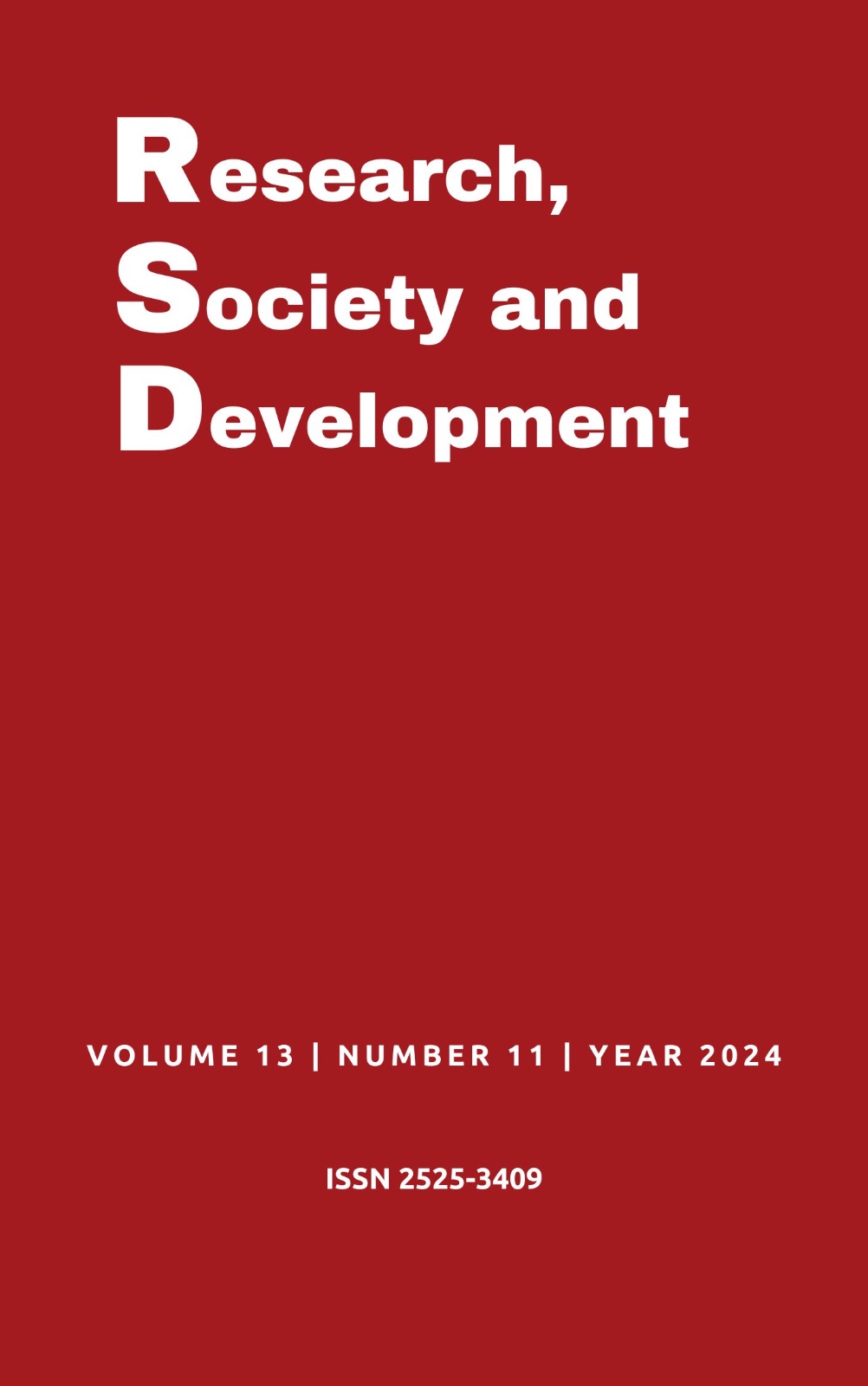Advantages of fixed-time artificial insemination in beef cattle farming
DOI:
https://doi.org/10.33448/rsd-v13i11.47235Keywords:
IATF, Beef cattle, Pregnancy rate, Reproductive management.Abstract
The objective of this research is to present a study on fixed-time artificial insemination (TAI) for beef cattle. A descriptive, qualitative study of a narrative literature review was carried out. IATF is an assisted reproduction technique that has significantly improved reproductive management on farms, relying on physiological and endocrinological principles to increase reproductive efficiency and profitability. It allows all reproductively capable cows to be inseminated at the same time, without having to monitor estrus individually, resulting in a higher service rate and accelerated pregnancy. Increased productivity and profitability: with a higher pregnancy rate and a reduced calving interval, there is an increase in the number of calves produced per year, increasing the productivity of the herd and, consequently, the profitability of livestock farming. Finally, it is known that TAI can reduce the incidence of health problems associated with heat detection, such as uterine diseases and physical injuries. Furthermore, by allowing a more uniform calving interval, it can improve animal welfare by reducing stress caused by prolonged or irregular estrous cycles.
References
Autran, A., Alencar, R., & Viana, R. B. (2017). Cinco liberdades. PETVet Radar, 1(3).
Almeida, I. L., Silva, M. J., & Souza, R. A. (2021). Inseminação artificial em tempo fixo (IATF) como ferramenta para melhoria do desempenho reprodutivo de vacas de corte. Revista Brasileira de Reprodução Animal, 45(4), 335–343.
Alvarez, R. H. (2008). Considerações sobre o uso da inseminação artificial em bovinos. http://www.infobibos.com/Artigos/2008_1/Inseminacao/index.htm.
Baruselli, P. S., Siqueira, L. G., & Silva, R. A. (2022). IATF em números: evolução e projeção futura. Revista Brasileira de Reprodução Animal, 46(2), 76–83. Colegiado Brasileiro de Reprodução Animal - CBRA.
Baruselli, P. S., Chechin Catussi, B. L., Abreu, L. Â., Elliff, F. M., da Silva, L. G., Batista, E. S., & Crepaldi, G. A. (2019). Evolução e perspectivas da inseminação artificial em bovinos. In Anais do XXIII Congresso Brasileiro de Reprodução Animal (CBRA-2019).
Baruselli, P. S., Siqueira, L. G., & Silva, R. A. (2002). Efeito de diferentes protocolos de inseminação artificial em tempo fixo na eficiência reprodutiva de vacas de corte lactantes. Revista Brasileira de Reprodução Animal, 26(3), 218–221.
Baruselli, P. S., Gimenez, L. U., & Sales, J. N. de S. (2007). Fisiologia reprodutiva de fêmeas taurinas e zebuínas. Revista Brasileira de Reprodução Animal, 31(2), 205–211. http://www.cbra.org.br/pages/publicacoes/rbra/download/205.pdf.
Casarin, S. T. et al. (2020). Tipos de revisão de literatura: considerações das editoras do Journal of Nursing and Health/Types of literature review: considerations of the editors of the Journal of Nursing and Health. Journal of Nursing and Health. 10 (5). DOI: https://doi.org/10.15210/jonah.v10i5.19924.
Cavalcante, L. T. C. & Oliveira, A. A. S. (2020). Métodos de revisão bibliográfica nos estudos científicos. Psicol. Rev. 26 (1). https://doi.org/10.5752/P.1678-9563.2020v26n1p82-100.
Cezar, I. M., Queiroz, H. P., Thiago, L. R. L. de S., Cassales, F. L. G., & Costa, F. P. (2005). Sistemas de produção de gado de corte no Brasil: uma descrição com ênfase no regime alimentar e no abate (Embrapa Gado de Corte. Documentos, 151). Embrapa Gado de Corte.
Da Silva, M. A., De Mello, M. R., & Palhano, H. (2021). Inseminação artificial e inseminação artificial em tempo fixo em bovinos. Revista Científica do UBM, 23(45), 79–97. https://doi.org/10.52397/rcubm.v23i45.1039
Godoi, C. R., Silva, E. F. P., & Paula, A. P. (2010). Inseminação artificial em tempo fixo (IATF) em bovinos de corte. PUBVET, 4(14), 119, Art. 807. https://www.pubvet.com.br/uploads/df7498b8994c6ca112dfa99cf76c0496.pdf
Gordo, J. M. L. (2011). Analysis of bovine artificial insemination biotechnology in the state of Goiás, Brazil (Tese de doutorado, Universidade Federal de Goiás).
Mendes, C. (2022). O que é uma revisão narrativa de literatura: exemplos e considerações da metodologia [Vídeo]. YouTube. https://www.youtube.com/watch?v=YlBWSVsxvRM
Mongelli, M. S., Tavares, I. C., & Ferrante, M. (2021). Evolução e premissas dos protocolos hormonais de inseminação artificial em tempo fixo na pecuária. Ciência Animal, 31(1), 119–133.
Nicácio, A. (2015). A inseminação artificial em tempo fixo (IATF): serve ou não para a minha propriedade? Embrapa
Oliveira, F. B., Satrapa, R. A., Gimenez, L. U., & Baruselli, P. S. (2013). Importância do emprego da eCG em protocolos de sincronização da ovulação para bovinos de corte. Universidade de São Paulo.
Pereira A. S. et al. (2018). Metodologia da pesquisa científica. [free e-book]. Santa Maria/RS. Ed. UAB/NTE/UFSM.
Rother, E. T. (2007). Revisão sistemática x revisão narrativa. Acta Paul. Enferm. 20 (2). https://doi.org/10.1590/S0103-21002007000200001
Snyder, H. (2019). Literature review as a research methodology: An overview and guidelines. Journal of business research, 104, 333-339
Sousa, L. R. G. de. (2023). Inseminação artificial em tempo fixo: inseminação artificial em tempo fixo (TCC de graduação, Centro Universitário Una Bom Despacho).
Downloads
Published
Issue
Section
License
Copyright (c) 2024 Nicolle Lima Basilio; Mayra Meneguelli

This work is licensed under a Creative Commons Attribution 4.0 International License.
Authors who publish with this journal agree to the following terms:
1) Authors retain copyright and grant the journal right of first publication with the work simultaneously licensed under a Creative Commons Attribution License that allows others to share the work with an acknowledgement of the work's authorship and initial publication in this journal.
2) Authors are able to enter into separate, additional contractual arrangements for the non-exclusive distribution of the journal's published version of the work (e.g., post it to an institutional repository or publish it in a book), with an acknowledgement of its initial publication in this journal.
3) Authors are permitted and encouraged to post their work online (e.g., in institutional repositories or on their website) prior to and during the submission process, as it can lead to productive exchanges, as well as earlier and greater citation of published work.


